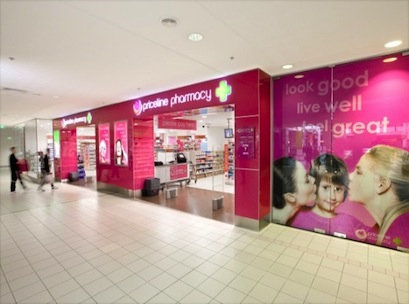 Priceline owner Australian Pharmaceutical Industries’ half-year net profit has fallen by 14.4 per cent to $24.9 million on lacklustre retail sales from its retail pharmacy network.
Priceline owner Australian Pharmaceutical Industries’ half-year net profit has fallen by 14.4 per cent to $24.9 million on lacklustre retail sales from its retail pharmacy network.
Speaking to investors and analysts on Thursday, API chief executive and managing director Richard Vincent said that an influx of competition had combined with a difficult trading environment to weigh on beauty sales, but that Priceline had not lost market share.
“The amount of discounting and competition that has emerged inside the health and beauty sector has ramped up significantly,” he said, revealing price deflation was between 3-4 per cent in the half.
Priceline booked a 1.7 per cent decline in comparable store sales and a .3 per cent decline in retail register sales for the six months ended 28 February.
The business has invested more in “sales driving activities” to protect market share, having slashed as much as 40 per cent off the majority of its make-up category in a recent promotion.
“There are discounts being offered on a daily basis across various retailers in Australia, everyone is fighting for a share of the wallet and its deeper discounts for a longer period of time … I think this will continue with the current economic situation,” Vincent said.
Sales growth in dispensary and OTC health products offset declines in discretionary beauty products, with total network sales, which include dispensary, up 2.1 per cent.
API’s pharmacy distribution network experienced stronger growth than Priceline, increasing underlying sales by 9.8 per cent on the prior corresponding period.
That left API with a decline in top line revenue of .3 per cent to $2.009 billion for the half, reflected in a 8 per cent decline in underlying earnings to $44.6 million.
Underlying net profit after tax, excluding $1.8 million of restructuring and strategic growth costs, was down 8 per cent on the prior corresponding period to $26.8 million, slightly ahead of API’s January guidance.
Vincent said he anticipates a continuation in difficult trading conditions in the second half, but that Priceline will focus on cost out opportunities to improve earnings for the full-year.
API expects its underlying FY18 result to be marginally higher than FY17, on a slight improvement in trading as well as cycling weaker comps from last year, providing trading conditions do not deteriorate further.
Acquisitions still on the horizon
Despite headwinds in the beauty category Vincent signalled API’s intention to continue looking for modest retail acquisitions in the health and beauty space in a bid to further decrease exposure to government regulated earnings.
“We’re looking for things linked to our core competencies, which are retailing, we’re looking for areas that can leverage our key assets such as the sister club [loyalty program] and our relation with women,” Vincent said.
Asked whether Chemist Warehouse, which was reported to be on the market for someone to take over its supply contract, was a possible move, Vincent confirmed that there was a tender process taking place but did not directly comment on whether API was involved.
“[Chemist Warehouse] is a large amount of volume … if I took that question hypothetically it would provide a huge amount of additional volume to the API network that would sweat our assets harder,” Vincent said
“Largely we would [have the capacity] we’d have to adjust our network in a couple of states but fundamentally we would.
“Ultimately Chemist Warehouse will have to make a decision on what they do with their business.”
Priceline repositions
Amid heightened competitive intensity Priceline has made a number of changes to its retail operations in the first half under its new general manager, former Spotlight Group COO Tamalin Morton.
“We have refined our tactical sales activity, which is now more targeted and responsive to changes in the increasingly competitive market,” Vincent said.
Priceline has reengineered its support services in a consolidated Melbourne office to reduce costs while moving much of its IT infrastructure to the cloud to better support its network of 446 stores.
But Vincent said there’s more work to be done, particularly in converting customers.
“Having looked at footfall in key stores we understand that we need to work harder on the conversion of browsers to shoppers,” he said. “We aim to do that through more great offers, exciting new products and very focused in store service measures.”
“Despite the combination of consumer sentiment being challenging for the foreseeable future and increased competition, the strength of our combined marketing assets, particularly our Sister Club loyalty program, continues to be the primary source of sales growth.”
There were 466 stores trading in the Priceline network at the end of the half-year, with 16 opened in the last twelve months.
Vincent said Priceline’s pipeline of potential pharmacy partners remains “robust” but maintained his view that “unrealistic rental demands” were putting a damper on store expansion.
The business is hoping to on board 16 pharmacies in the second-half to round out its 20-stores per year target.
More to come…
UPDATED 19/04/2018 – 13:30 AEST
Access exclusive analysis, locked news and reports with Inside Retail Weekly. Subscribe today and get our premium print publication delivered to your door every week.





